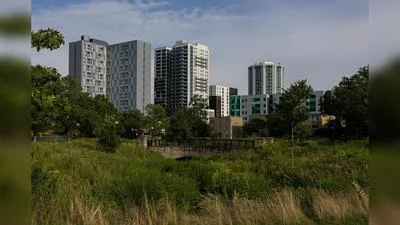Matt Manninger Assistant Strength Coach | University of Illinois Division of Intercollegiate Athletics Website
Matt Manninger Assistant Strength Coach | University of Illinois Division of Intercollegiate Athletics Website
The inspiration for a new athletic stadium at the University of Illinois can be traced back to George Huff, a notable figure in the university's history. Huff, who grew up on a Champaign cattle farm, was one of Illinois' first standout athletes and served as both a coach and director of athletics for the Fighting Illini. Recognizing the need for modern facilities due to growing student enrollment and witnessing large crowds being turned away from games, Huff advocated for a new football stadium.
Huff's vision received support from University President David Kinley, who helped form an executive committee to lead a $2.5 million fundraising campaign. The campaign kicked off in April 1921 with speeches from Kinley, Huff, and head football coach Robert Zuppke. During this event, students pledged significant amounts towards the project.
Construction began on September 11, 1922, after securing funding through alumni contributions and public pledges. The task was awarded to English Brothers of Champaign following designs by Chicago architects Holabird and Roche. Despite challenges such as weather delays and financial shortfalls threatening progress in early 1923, efforts by business manager C.J. Rosebery and others ensured that construction continued.
By November 3, 1923, Memorial Stadium opened just over a year after groundbreaking. The opening game against Chicago saw attendance reach over 60,000 despite rain. The event marked a successful culmination of collective efforts from students, alumni, faculty members like Kinley and Huff.
"Illinois is larger and has more prestige than any of these universities," said Huff about the need for expansion compared to other institutions like Harvard or Yale.
"I want to see a great stadium at the University of Illinois," Huff stated during initial fundraising efforts.
University President Kinley emphasized its significance: "This stadium represents...physical education...its memorial feature...students will build it with contributions."
The dedication demonstrated not only athletic ambition but also commemorated those who served in World War I while embodying Illinois spirit through collaborative achievement.






 Alerts Sign-up
Alerts Sign-up